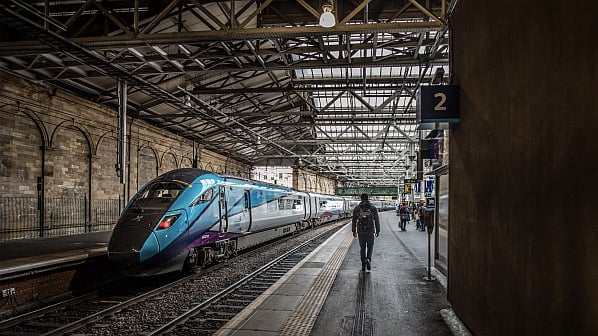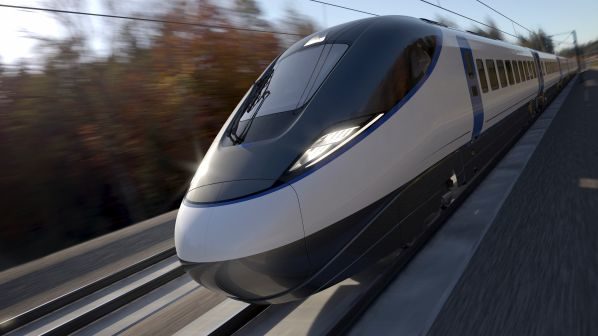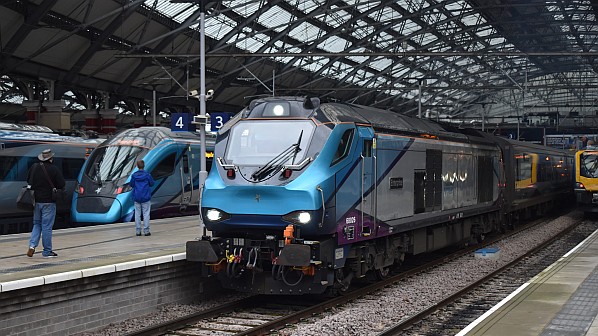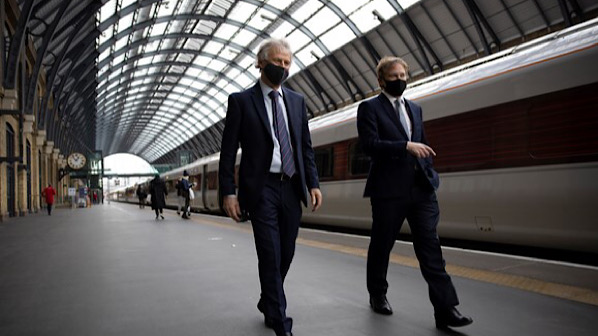OVER three years since the Covid-19 pandemic began, ridership on Britain’s railway has largely recovered, reporting an average of 98.3% of pre-Covid traffic in April.
This is quite a turnaround from 50% in early 2022. Passenger operator revenue has also reached 90% of pre-Covid levels while freight has also recovered. Since opening in May 2022, the Elizabeth Line, London’s new east-west railway, has carried more than 150 million passengers, becoming one of Britain’s busiest railways.
Unfortunately, these are the few bright spots of an increasingly troubled period. Prolonged and widespread industrial action has hit operators hard over the past 12 months, amplifying service reliability issues, particularly at TransPennine Express (TPE) and Avanti West Coast.
Indeed, the Department for Transport (DfT) confirmed on May 11 that it would not extend FirstGroup’s contract to operate TPE beyond May 28, with the government-run Operator of Last Resort (p13) stepping in. TPE joins Northern, East Coast and Southeastern along with Transport for Wales and ScotRail as government controlled operators although, under the current post-pandemic, post-franchising structure, DfT is effectively making all commercial decisions - it is now considering asking all operators to withdraw onboard Wi-Fi to reduce costs.
Much of the current flux is due to uncertainty over reform. Under reforms announced in May 2021, new Passenger Service Contracts (PSC) will be introduced to give private operators greater commercial freedom. Great British Railways (GBR), a new industry body, will award the PSCs and also absorb infrastructure manager Network Rail (NR) while the government will develop a 30-year investment plan and a new fares strategy.
Yet two years since the Williams-Shapps Plan for Rail was published - and five after this review was announced - the industry is still waiting to find out when GBR will come into being.
New legislation is required to create GBR and to transfer the powers to let PSCs. However, the government scrapped plans for the bill to be considered in the current legislative session, expected to run until this autumn. There is also growing uncertainty over whether it will find time in the next and final parliamentary session before a general election, due by January 24 2025.
The Times reported on May 18 that DfT sources had been told that the legislation is not a priority for prime minister, Mr Rishi Sunak, in the final session. The government quickly moved to quash such suggestions, stating that no decision had yet been made.
The railway industry is lobbying hard to avoid such a scenario. The Railway Industry Association (RIA) sent a letter signed by industry leaders urging the government to proceed with the bill. If this were to happen, Mr Andrew Haines, NR chief executive and head of the GBR Transition Team, has said GBR could become active by autumn 2024. If not, its future is uncertain. The Labour Party is widely expected to win the next election and whether it would prioritise a bill on rail reform in its current form remains to be seen, especially after campaigning for full nationalisation in its 2019 election manifesto, a commitment that leader, Sir Keir Starmer, has thus far retained.
Capital investment
This lack of clarity extends to investment. On the face of it, things appear to be acceptable. NR published its initial Strategic Business Plan (SBP) for the next five-year regulatory Control Period 7 (CP7) on May 19. It will spend £44bn on operating and maintaining the network in England and Wales from April 1 2024 to March 31 2029. The SBP for Scotland will be published later this summer.
The situation for enhancements is less clear. Funding for these projects is no longer part of the regulatory settlement for each control period but is determined by DfT on a case-by-case basis. The Integrated Rail Plan (IRP), published in November 2021, outlined £96bn of investment, including on key projects such as HS2, the Transpennine Route Upgrade (TRU), installing ETCS on the East Coast Main Line, and electrification of the Midland Main Line (MML).
Yet the Rail Network Enhancements Pipeline (RNEP), which outlines NR’s capital improvement projects during CP6 and was announced by the government in October 2019, has not been updated.
IRP scaled back the scope of HS2’s second phase. But work is very much underway on the first 225km section from London to Birmingham. However, ballooning costs - the scheme is projected to exceed £50bn - has forced the government into a rethink.
Construction of sections to Crewe and the London terminus at Euston will be delayed by at least two years. Some contractors are now understood to being stood down from the project. The situation is especially frustrating for the industry. Suppliers at the Railtex exhibition in Birmingham on May 9-11 bemoaned the fact that after being wooed for years to participate in tenders, there are no contracts forthcoming.
HS2 is also becoming a drain on other investment projects. A report in Modern Railways in Aprilstated that MML electrification is at risk of cancellation amid rising HS2 costs. Indeed, electrification is an especially prickly point. Since the completion of the Great Western (GW) project in 2020, total track-km electrified has decreased by 7km. The GW project, which came in years late and billions over its initial budget, has seemingly soured the government’s appetite for further schemes.
The approach is especially galling given that its own Transport Decarbonisation Strategy, published in September 2020, calls for major electrification projects to help deliver net-zero operation by 2040. The decision not to electrify the under-construction East-West Railway from Oxford to Cambridge and to purchase more diesel rolling stock appears frankly ludicrous.
Brexit could also hinder future innovation. While a major player in Shift2Rail, NR is excluded from its successor Europe’s Rail joint research undertaking. NR’s head of rail technology, Mr Gareth Evans, revealed at Railtex that it is working with ProRail and Swiss Federal Railways (SBB) on several integrated research programmes. Yet the impression was that NR and Britain’s railway are very much outsiders looking in. The railway is now at real risk of not being able to capitalise on the next-generation of railway technology that the programme promises to develop.
The crisis for Britain’s railway is very real. The industry is crying out for direction and impetus from the very top of government. Unfortunately, in the current climate, this does not appear to be forthcoming.




